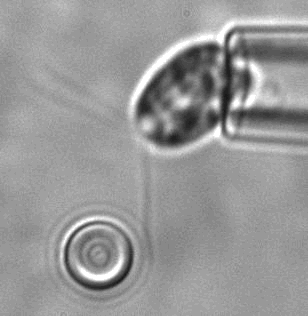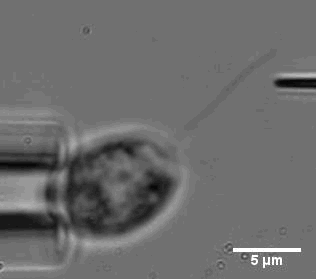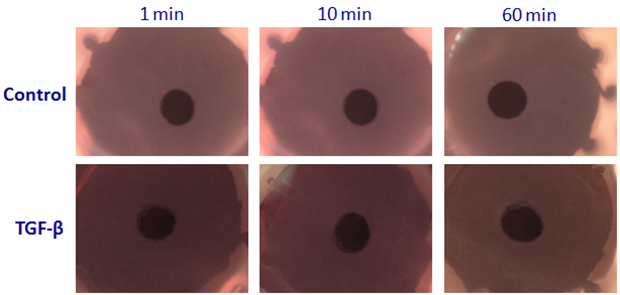Summary
Mechanical force and deformation are intrinsic to biological systems at multiple scales, from molecules and cells to tissues and whole organs. Biological processes involve coordinated coupling between mechanical and biochemical signals. Biomechanics is an interdisciplinary field which exploits principles and methods of mechanics to better understand, predict, and control biological function at any length scale.
My research interests span subcellular, cellular, and developmental biomechanics. We integrate both experimental and computational biomechanics approaches to address fundamental problems in biology and medicine. The goal is to discover biomechanical principles intrinsic to development, health, and disease.
Mechanics of Flagella and Cilia
Cilia and flagella are thin (diameter ≈ 250 nm, length ≈ 10 µm), active organelles that beat regularly to propel cells or to move fluid and foreign materials around them. Cilia are an essential component of innate host defense, and their malfunction, due to either acquired or genetic defects, can lead to various respiratory and other diseases.
The goal of this ongoing research is to
illuminate, using mechanics and engineering methods, how mechanical
force and
deformation modulate the coordinated oscillations of cilia and
flagella. The ultimate objective is to better
understand, prevent, and treat cilia-related pulmonary disease
including respiratory
problems in infants and young children.


Tension in Dermal and Skin Equivalents
Fibroblasts play a critical role in wound healing by generating traction and contractile forces in the presence of collagen lattices. The magnitude and potential alterations in tension generation remain unclear during normal and wound healing conditions. In this study, we combine experimental and computational biomechanics methods to probe the mechanical tension in the dermal equivalents that are made up of human dermal fibroblasts and type I collagen. Quantifying the mechanical forces and deformation generated by these fibroblasts can help us further understand the progression of cancer and diseases, tension and contraction in wound healing, and biochemical signaling of cells.

Mechanics of Single Cancer Cells
Funding Sources
